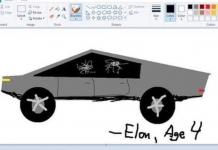A Japanese school for the blind figured that the kids would gain a different perspective if the things they looked for on a search engine would be turned into real-life objects.
The Hands on Search project, which might remind some of the Star Trek replicator, couldn’t have been made by anyone else than a search engine. If you thought that it’s Google’s hand, then you’re wrong, as it’s Yahoo! Japan that brought this project to life.

The custom-made 3D printer may not be an exact Star Trek replicator, but it is incredibly similar to one. The main difference would be that it does not produce the results as fast as a replicator. As part of the project, Yahoo! Japan brought this fluffy cloud-shaped 3D-printer to the Special Needs Education School for the Visually Impaired. To make everything happen, this school affiliated with University of Tsukuba, which is just outside Tokyo.
To have the results 3D-printed, the kids only have to say the name of an animal or object. Upon acknowledging the request via voice recognition, the integrated computer starts searching for adequate 3D data. The object is next 3D printed and at the end of the process, kids can feel the tangible search results. In the following video we are shown how the Tokyo Sky Tree, a giraffe and a tyrannosaurus are printed. Obviously, the printer produces these objects at a much smaller scale, as otherwise it would need a lot of time to complete the tasks, not to mention that the kids would be confused by the objects.
The above clip really gave me goosebumps. The kids can now imagine how various animals and objects look like by touching the edges and surfaces of the 3D-printed search results. The excitement that can be noticed on their faces is priceless.
I’m glad to see that people with various deficiencies are helped to live as normal of a life as possible. Yahoo! Japan helps kids feel 3D-printed objects to better understand how they look like in real life, while other companies focused on creating wristwatches and even smartphones for the blind. Someday, due to medical advancements, maybe we’ll even be able to restore the vision of the ones who cannot see. It may sound like an ideal, but it is not impossible.
If you liked this post, please check the world’s first Braille smartphone and this elegant wristwatch that tells the time via tactile perception.










